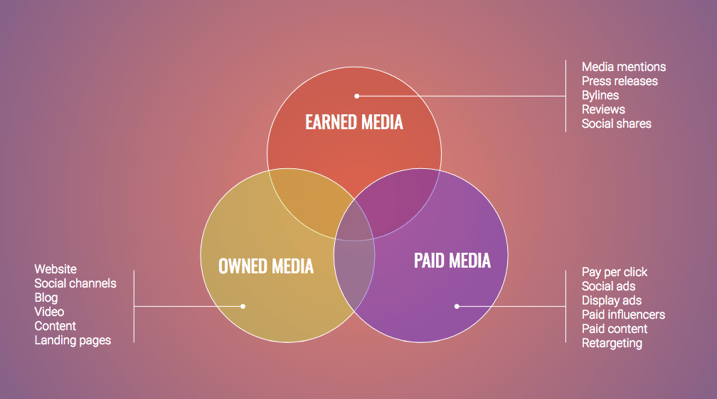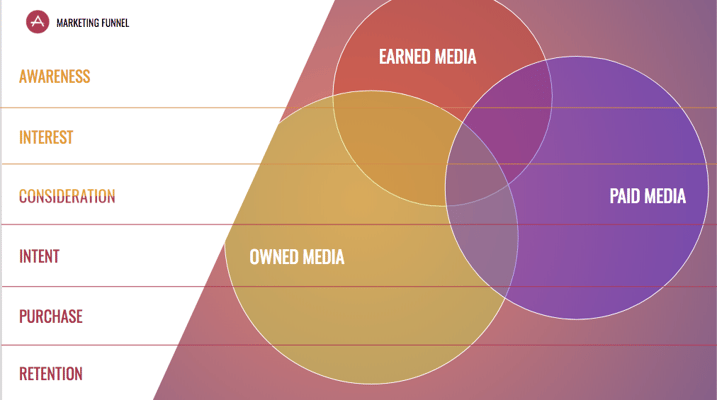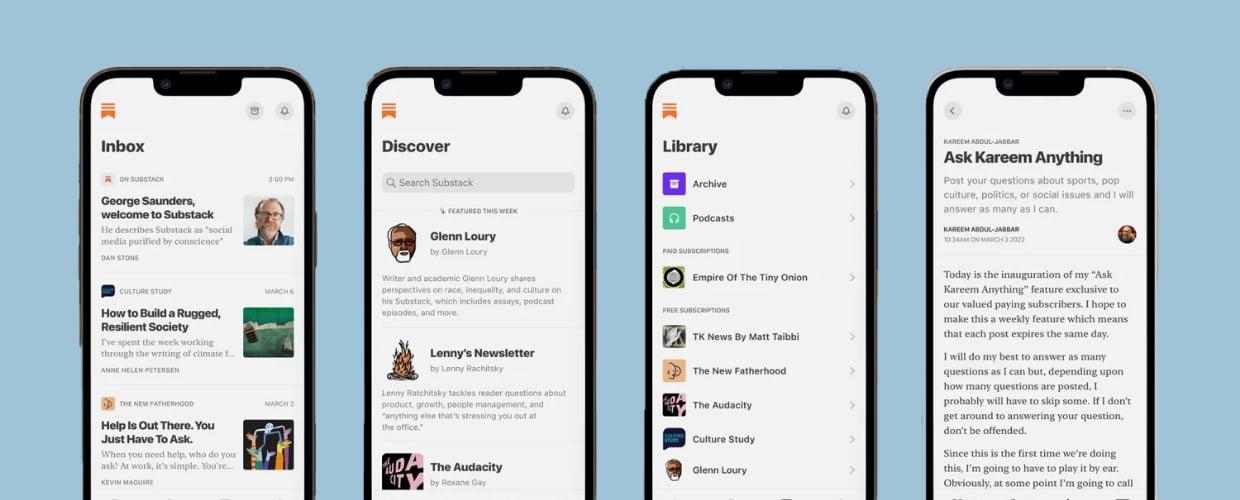In the world of public relations, paid, earned and owned media are the cornerstones of every content campaign. Each one of them can be an effective way to drive engagement with your brand, but when all three of them work together, that's when the real magic happens.
As you might expect, paid media refers to paid placements, including native advertising, branded content and sponsorships. Earned media is when journalists highlight your brand organically, informed by non-paid efforts such as press releases and media outreach. In contrast, owned media is content that falls under a company’s direct control in terms of creation, hosting and distribution. Owned media can be content that appears on a brand’s website or social channels, from blogs to tweets to infographics to podcasts to YouTube videos.

Paid and earned media aren’t going away, and they are still incredibly important focus points. But if you want to take charge of your brand’s message and growth, owned media is an essential part of your marketing mix.
A number of factors are creating momentum for owned media. A recent report by the University of Southern California (USC) Annenberg found that 64 percent of PR professionals believe the average person won’t be able to tell the difference between paid, earned and owned media within the next five years. Even more surprising, the report notes that 59 percent of PR professionals believe the average person won’t care whether these types of media are clearly distinguishable.
As a result, PR and marketing teams are being called upon to develop more and more types of content, and the quality of the content they develop will become increasingly important. As they continue to slide into the role of content-creators, they will also be under increased pressure to hold similar responsibilities as traditional media in terms of reporting, providing background research, adhering to ethical standards and developing high-quality content that is on par with traditional media.
Having worked as a tech journalist for 20 years, I know first-hand how difficult it can be for smaller brands to break through those “earned media” barriers. The past decade has been difficult for the journalism industry, and as newsroom staffs and budgets continue to shrink, reporters have more responsibilities and less time. It’s increasingly difficult to capture their attention.
That has created another source of momentum for owned media. Owned media gives every brand an opportunity to take control of their own message, establish a distinct voice in the market and create the stories they’d like to see covered. If owned media is done well, the quality of the content can generate earned media opportunities.
There is no “one-size-fits-all" approach to owned media, but there are some consistent best practices. Here are a few tips to help you get started on your strategy.

1) Make Your Content Meaningful
When you look at Nike’s Colin Kaepernick ad or Airbnb’s 2017 Superbowl ad that aired on the heels of President Trump’s immigration ban, it becomes clear that branding and activism are becoming intertwined. If you understand what’s important to your audience, you can weigh in when your brand has an authentic stance on those issues.
The key word there is “authentic.” Intense social and political issues should not be treated as opportunities to push your brand into the spotlight. And even if your heart is in the right place, taking a stand can be a double-edged sword: While your message may resonate strongly with your core customers, you may alienate anyone who feels differently. The best pieces of content are not one-way messages, but open invitations for dialogue with your audience and potential customers.
2) Make It Objective
Content that overemphasizes your product or your brand can come across as “salesy,” and that can be a turn-off to your audience. Whatever your content ultimately looks like, be sure to take a step back once it’s completed to ensure it speaks to the everyday person, not just to your sales team.
When you’re passionate about your brand, it can be tricky to set biases aside and view it through fresh eyes. You may already know how fantastic your brand is, but your audience is not so easily sold. The first step in building any relationship lies in truly connecting with someone on a human level.
3) Make it Educational
Many people who visit your owned-media channels will be looking to learn something new. Your team’s expertise can be an invaluable resource for those who follow your brand.
Instead of listing all the amazing technologies in your latest product, consider showing how they work in an educational video segment. Instead of claiming your product is incredibly durable or waterproof, it might be more interesting to show the fascinating ways in which your team tests those features. A deep-dive story or video doesn’t just inform the public, it reveals how knowledgeable and passionate your team is about its work.
4) Make it Visual
These days, the written word only goes so far. Great photography, a well-produced video or a compelling infographic can help your story reach a bigger audience and make your message resonate more effectively. Visual content is a tried-and-true way to drive engagement on social networks, YouTube is the second most-popular search engine in the world, and in 2019, time spent viewing online videos will surpass time spent watching television globally.
That doesn’t mean you should make a video for everything. Every story is best told in a certain medium or a combination of formats. In today’s multi-channel world, you simply have more opportunities to tell and distribute each story in the best way possible. Your brand can reach its audience through the channels it uses the most -- whether it’s Instagram, YouTube, over-the-top streaming or Facebook – and gain wider visibility through social sharing.
5) Most Importantly, Make It Stand Out
Like any essential component of your marketing mix, the ideal owned-media strategy should be unique to your brand. It should also involve a lot of work.
An effective owned-media strategy requires a deep commitment of time, energy and resources. The ultimate measures of success will be how well you regain control of your message and how well you can create authentic ongoing relationships with your audience.
As you begin planning your content development for 2021, Airfoil wants to help you establish the right strategy for your brand. Connect with us today to make sure your media strategy will set you up for success.





